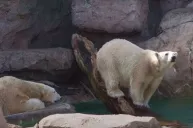National parks have long been touted as the pinnacle of land and animal conservation. However, a new study points to some flaws in the notion. The Natural History Museum of Utah's research shows that national parks may be seen as an essential part of conservation. Still, evidence shows "that many parks are too small to sustain long-term viable populations and maintain essential, large-scale ecological processes, such as large mammal migrations and natural disturbance regimes."
In the study, published Jan. 11 in Scientific Reports, the authors argue that the biggest threats to plant and animal species along western parks are habitat loss and fragmentation, because those locations have become "spatially and functionally isolated in a matrix of human-altered habitats."
Those areas become problematic because the park and reserves are not large enough to "preserve intact animal and plant communities."
The authors propose linking parks such as Yellowstone and Glacier National by singling out and removing barriers to movement. Mount Rainer and North Cascades are another hypothetical linkage noted by the authors.
"Eliminating barriers of movement between parks and more carefully managing land use along these pathways are crucial for the survival of many mammal species," said William Newmark, research curator at the Natural History Museum of Utah and lead author of the study. "Establishing an expanded protected area network based on identified mammal pathways and incorporating adjacent wilderness areas would greatly enlarge available habitat for mammal species. And this would have a very positive effect on species persistence time."
The study shows the long-term persistence time of mammal species would increase by a factor of 4.3 if the corridors are put in place. However, the proposed link would cross two- and four-lane highways, requiring ecological bridges either under or over the roads. Many ecological bridges are already being constructed in the western United States and Canada.
"However, a much greater effort will certainly be required if we are to reduce the known adverse impacts of highways on species movement and dispersal," said the study's co-author, Paul Beier, professor emeritus of Northern Arizona University.
Ecological corridors have been the subject of many small-scale studies that show their usefulness to animals. The authors of this study used information from habitats around the world to study patterns of species loss.
"The analytical approach presented in this paper can provide conservation planners and practitioners with a powerful method of prioritizing and quantifying the value of ecological linkages between protected areas," said John Halley, a co-author of the study and a professor at the University of Ioannina.
The authors point out that increased connectivity in the western U.S. and Canada would play an important long-term role in biodiversity and preservation. Initiatives have already begun and will likely serve as templates for large-scale conservation efforts in the U.S. and abroad.




